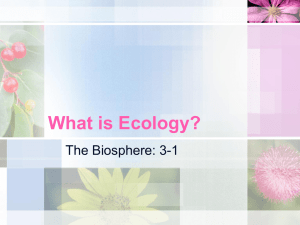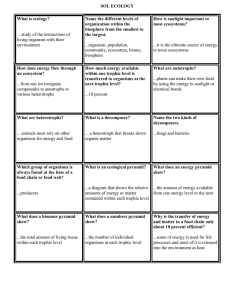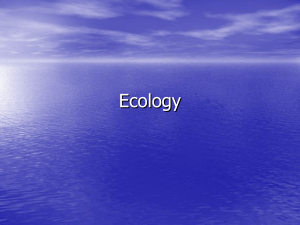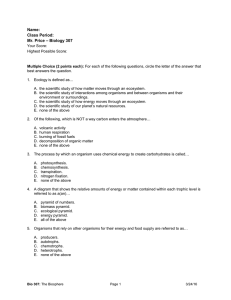PPT: Principles of Ecology
advertisement
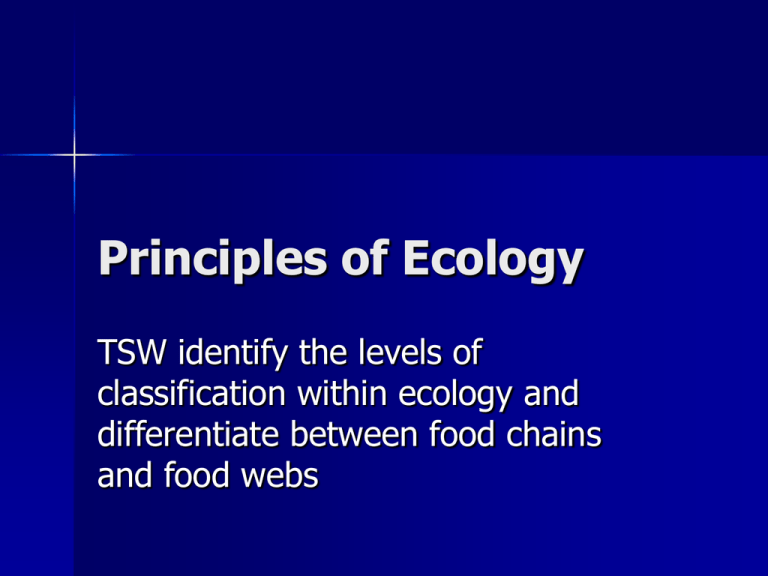
Principles of Ecology TSW identify the levels of classification within ecology and differentiate between food chains and food webs What is ecology? The study of the interactions of organisms with one another and with their physical surroundings Levels of Organization (Broadest to most specific) 6. 5. 4. 3. 2. 1. Biosphere Biome Ecosystem Community Population Individual 6. Biosphere Contains the part of the earth in which ALL life exists (including land, air, water, and atmosphere) 5. Biome A group of ecosystems that have the same climate and similar dominant communities Can you think of any biomes? 4. Ecosystem A collection of all of the organisms that live in a particular place, together with their nonliving, or physical environment 3. Community All the populations of organisms living in a defined area – Can be one inch of soil or and entire forest 2. Population A group of individuals that belong to the SAME SPECIES and live in the same area 1. Individual One organism of a particular species What keeps populations from growing without end? Limiting interactions – Densitydependent – Densityindependent Density-dependent Factor Factor that depends directly on the size of a population Examples: – Disease (esp. parasitism) – Predation – Competition for space and resources – Crowding and stress Density- independent Factor Limiting factor that affects all populations in a similar way, regardless of population size Examples: – Temperature and climate changes – Natural disasters – Chemical pollutants Simple Interactions Food chain: a series of steps in which organisms transfer energy by eating or being eaten Trophic Levels Producers: Organisms that make their own food from inorganic sources 1º consumer: aka Herbivores, get food/energy by feeding DIRECTLY on producers 2º consumer: Feed on 1º consumers Ecological Pyramids Diagram showing the relative amounts of energy/matter contained within each trophic level in a food chain/food web 3 Types of Pyramids Energy: Lose actual energy as you move up the pyramid Biomass: Most mass is found at the bottom of the pyramid Numbers: Most individuals are found at the bottom of the pyramid Rule of 10 Only about 10% of the energy available within one trophic level is transferred to organisms at the next level Food Web When the feeding relationships among the various organisms in an ecosystem form a network of complex interactions Link all food chains together







